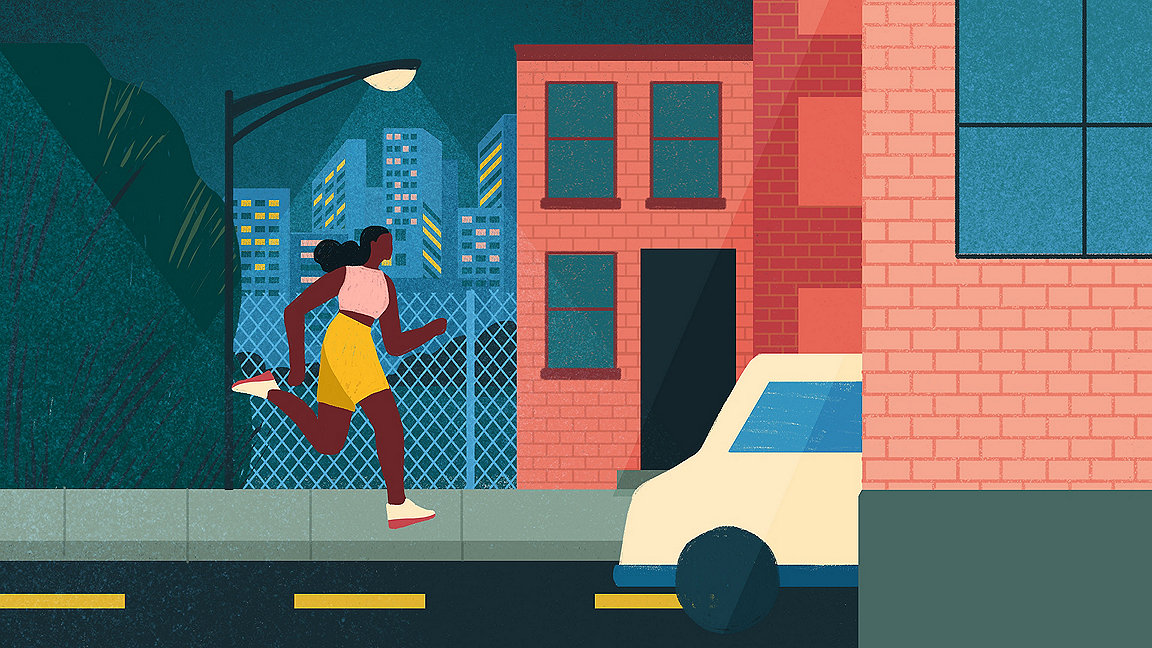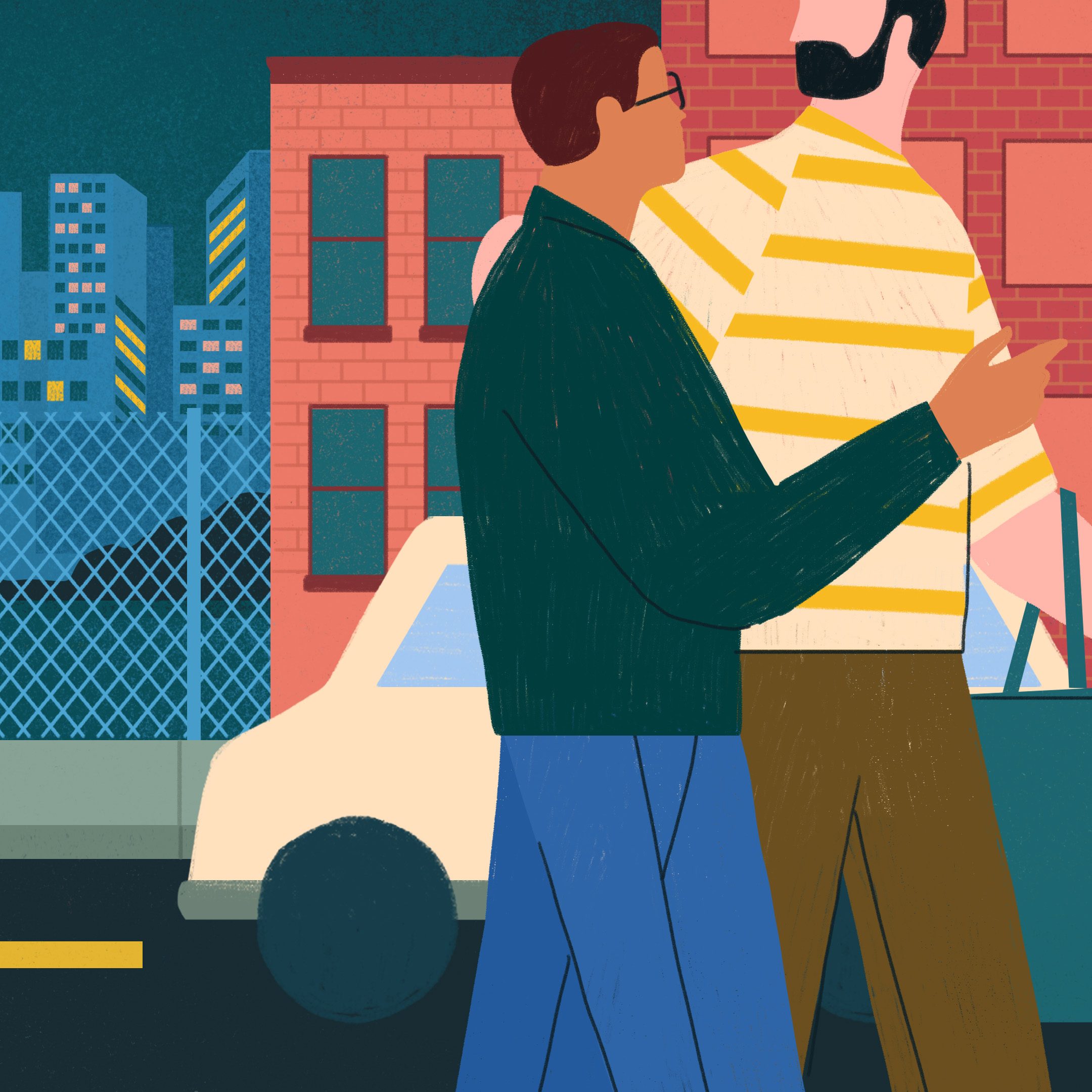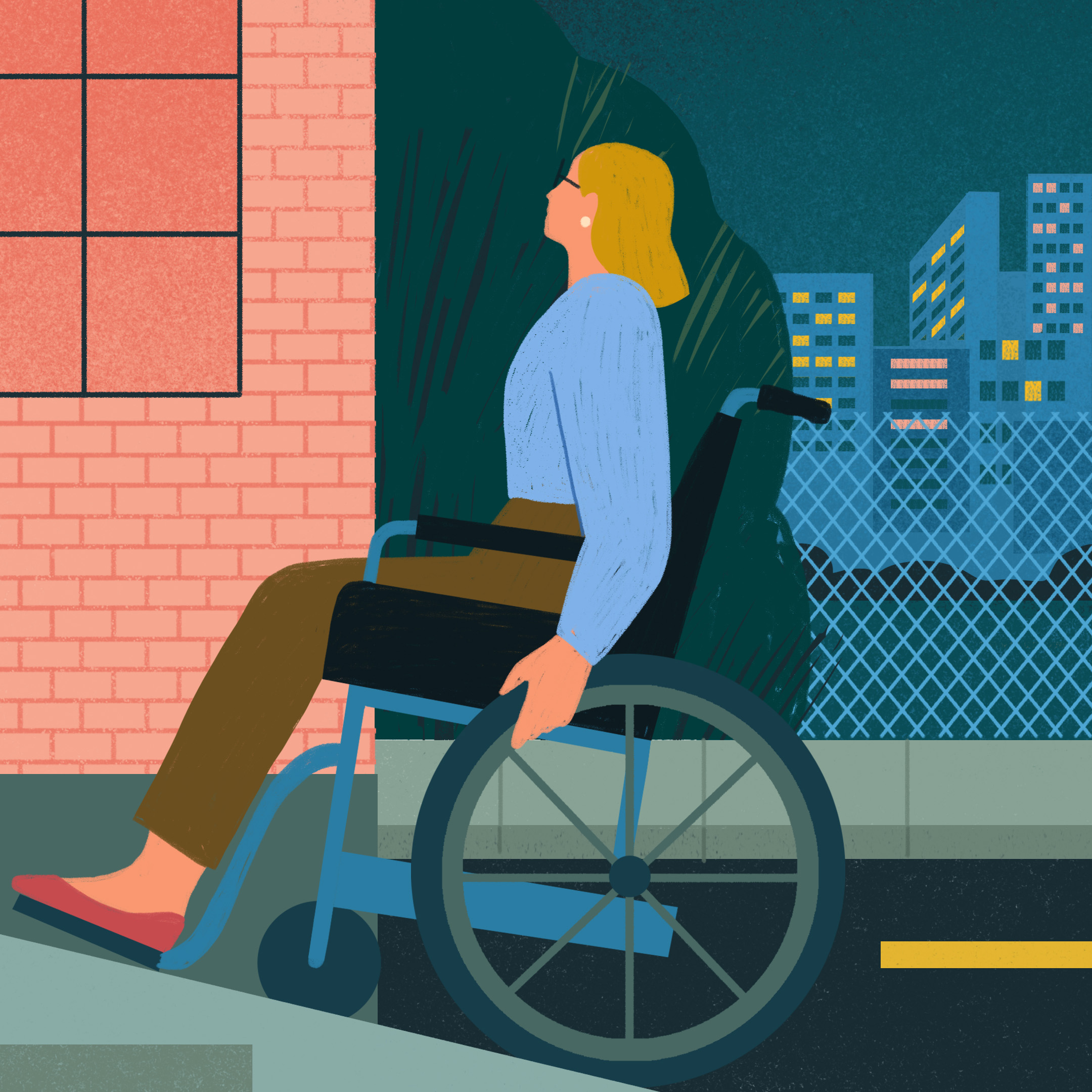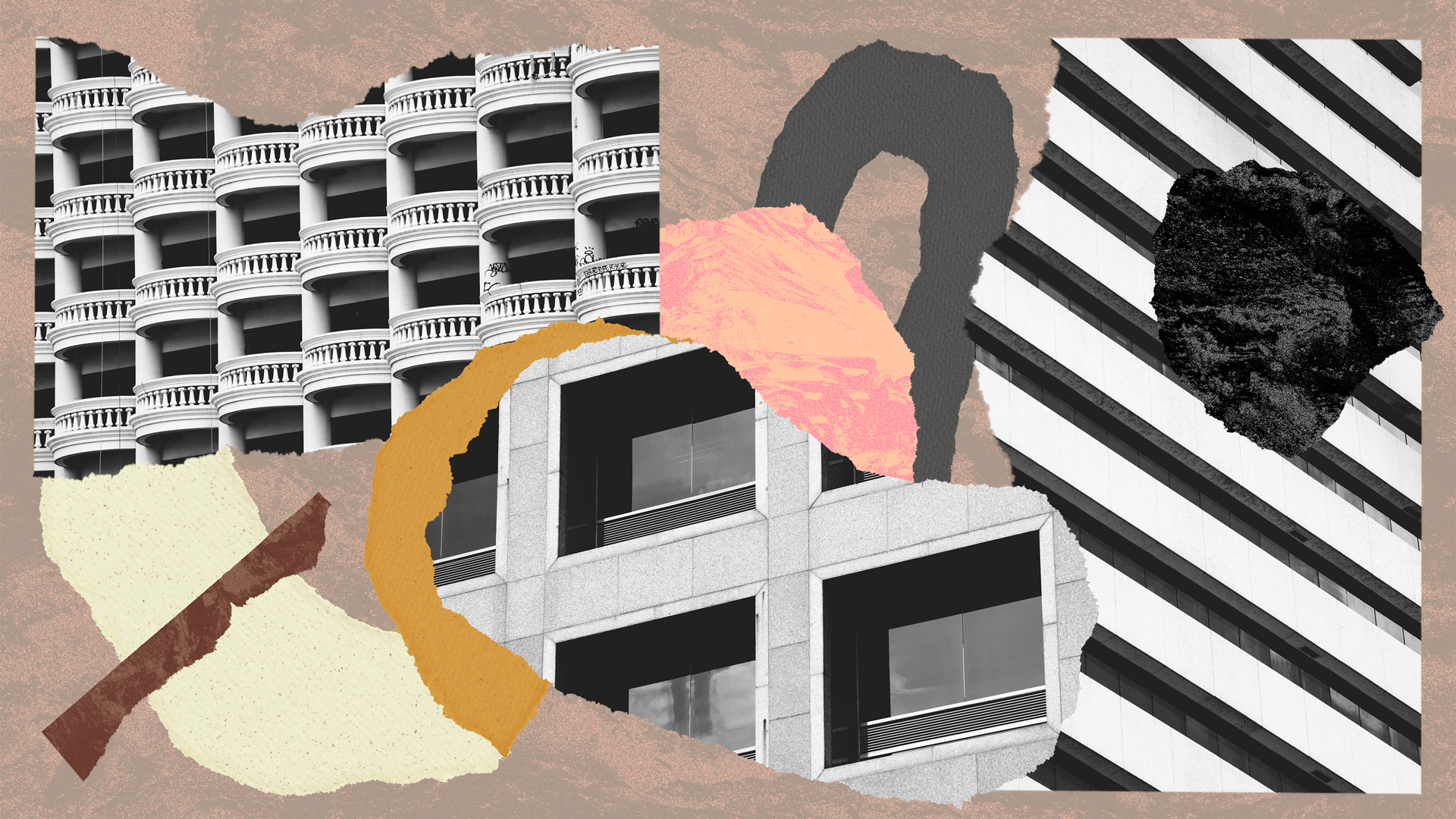
Illustration by Abbey Lossing / Handsome Frank
A recent Samsung advert depicting a woman going for a run at 2am reveals the societal problems around women’s safety in public spaces on many levels. “I run on a different schedule,” says the voiceover. Not a schedule that is recognisable to the female runners and women’s groups which have condoned the commercial as ‘tone deaf’, in light of cases such as Ashling Murphy who was killed while out running in Tullamore, Ireland.
According to Office for National Statistics figures in its 2021 Opinions and Lifestyle Survey, one in two women and one in five men felt unsafe walking alone after dark in a busy public place. And disabled people felt less safe walking alone in all settings than non-disabled people. The built environment needs a radical rethink, especially when it has, up until now, been based on the perceptions of those responsible for its design: usually cisgender men.
“The people in power have never had to take care of kids, they don’t know what it’s like to walk four blocks with formula and diapers,” says Elaine Worzala FRICS, professor of real estate and chair of the Center for Real Estate and Urban Analysis at George Washington University. “From a developers’ perspective, they need to pay attention not just to the buildings but what sits in the community. You need to have good schools, grocery stores, reasonably priced housing and decent public transportation. If a place has too many ‘negative attributes’, you could be in fear of your life for the last two blocks of your walk home and you’re not going to be happy living there.
“It’s not just developers who can assist with making safer communities. Public officials, they also need to make it a priority to get creative and allocate resources so that people can live, work and play safely.”
Caroline Dove, a partner with HTA Design agrees. “You need to feel safe where you live, in the streets and spaces you need to use, at any time of day or night. Designing places to include all generations, and encourage sociability, is a fundamental principle of good design.”
She cites two examples from her book Radical Housing: Designing multigenerational and co-living housing for all. Multi-generational co-housing at La Borda in Barcelona, by Catalan architects Lacol is a cooperative which shares spaces and resources. It was designed in collaboration with the prospective residents, and features an internal central courtyard. Access balconies create shared, sociable spaces, connecting the older and younger residents.
At Hanham Hall, on the outskirts of Bristol by HTA Design, family houses have sociable front gardens encouraging people to meet and talk to their neighbours and passers-by. Community gardens, greenhouses, the orchard and allotments are all safe, shared spaces where residents of all generations come together.
The importance of public space
Architect Tara Gbolade uses the example of the design response to a project consisting of 14 townhouses overlooking a park. Gbolade Design Studio’s proposal included opening up a pedestrian path and incorporating more planting. “Housing on the main walk has angled and chamfered façades to provide natural surveillance,” says Gbolade. “There are shared spaces such as a dining area and pizza ovens along the walk. The path was designed for meandering through the space, slowing people down, including benches for people to sit so different age groups will gather.
“Legibility of paths from one end of the walk to another means women and children feel they have multiple exit routes when in a space. If you make it safer for women, it means you widen the range of people who will feel comfortable using it, including older people and wheelchair users,” she adds.
Deborah Saunt, one of the founding directors of architects DSDHA says: “The number one requirement for feeling safe in any space is good sightlines.” DSDHA was responsible for Exchange Square in London’s Square Mile, an area Saunt says is “well known for its dark alleys and smaller pocket parks, which perhaps do not lend themselves to the most relaxed experience for those who feel vulnerable. Exchange Square is a game changer: everyone is welcome; it has lots of ways in and out; large open views to a series of character areas. It’s also beautifully lit and always has people passing through it.”
Another minority group is the focus of Arup’s Queering Public Spaces report, which looks at the relationship between queer communities and public spaces. Lighting is one of the main design factors focused on in the report: “Lighting the surrounding trees, sculptural or architectural elements to create an ambience will create a sense of character and atmosphere conducive to feeling safer.” It also mentions ambient light from shopfronts and where the light is aimed: at a façade or street furniture, making a difference to feelings of safety.
This is part of ‘designing in diversity’ – one of the Arup report’s key recommendations. The report concludes by looking at the “scale and mass of buildings, rooflines, colours and façades; the addition of curvilinear aspects; the softening of soundscapes and visual environments through choice of surfaces, greenery and water features.”

“Public officials need to get creative and allocate resources so that people can live, work and play safely” Elaine Worzala FRICS, Center for Real Estate and Urban Analysis
There goes the gayborhood
Other recommendations in Queering Public Spaces include rethinking the ‘gayborhood’: places anchored by bars, restaurants, bookshops and community centres. These spaces, it argues, can be “overly structured around gay white males, sometimes to the exclusion of trans and gender nonconforming people (TGNCP) and LGBTQ+ people of colour.” The report also highlights the need for inclusivity of LGBTQ+ communities, particularly in the planning process.
A diversity of thought is something also highlighted by Zoe Berman, founder and co-director of Part W, an action group calling for gender equality in the built environment. She says: “Women are not given an equal seat at the table when it comes to making decisions about design. Their chances to bring their lived experiences forward to shape cities are limited by lack of recognition, lack of job promotion and poor industry practices. It's connected to a chain of problems that then ends up with resulting spaces that do not consider the needs of women and awareness of issues of access and safety.”
It’s a wholly different story in Vienna, explains Maria Vassilakou, former deputy mayor and deputy governor of the Austrian capital. “Back in the 1990s, we started this idea of gender-sensitive design and at first we knew that not everybody took it that seriously. But we decided to embed it as one of the major political projects.”
This urban planning project included the appointment of women in several key leadership roles. Vienna also took a very practical approach to the everyday realities of the city’s population, particularly women, from public toilet provision to cycleways to park and ride facilities to sidewalk widths. “We conducted workshops at a local level with local administrations and also worked together with the university so that the next generation of young architects and planners would have studied this perspective before embarking on their careers.”
Vassilakou is now an independent advisor on urban transformation “There’s a realisation among cities around the world of the importance of quality, accessible public space; from traffic calming measures to greening, shading and walkability.
Pre-dating even the work in Vienna, the work of the Matrix Feminist Design Co-operative looked at voices and groups often excluded in the design of buildings, including black and Asian women’s organisations, community and childcare groups and lesbian and gay housing co-operatives. It proposed and explored more inclusive ways of designing, building and occupying spaces with the results providing the focus of a recent Barbican exhibition, How We Live Now: Reimagining Spaces.
While women won’t be putting on their trainers for a run in the wee small hours just yet, there is at least movement in the right direction.

“Designing places to include all generations, and encourage sociability, is a fundamental principle of good design” Caroline Dove, HTA Design


